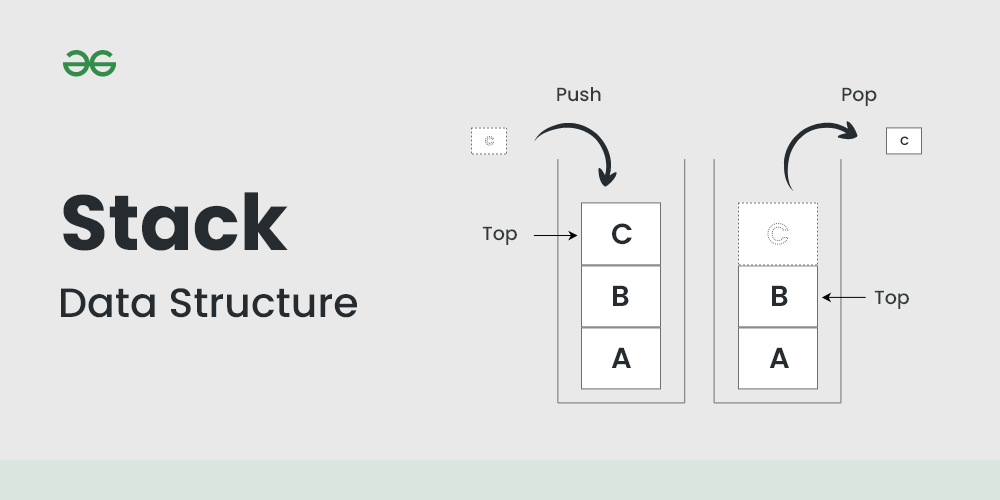【Qt+OpenCV图像处理实战】:从零到精通,打造实时摄像头处理系统
发布时间: 2024-08-10 01:19:36 阅读量: 610 订阅数: 34 


# 1. Qt与OpenCV简介**
Qt和OpenCV是两个功能强大的库,分别用于图形用户界面(GUI)开发和计算机视觉。Qt提供了一个跨平台的GUI框架,使开发人员能够创建具有丰富功能和美观的应用程序。OpenCV则专注于图像处理和计算机视觉,提供了一系列算法和工具,用于图像处理、特征提取和对象识别。
结合Qt和OpenCV,开发人员可以创建功能强大的计算机视觉应用程序,这些应用程序可以处理实时摄像头输入、执行图像处理算法并显示处理后的结果。这种组合非常适合需要图像处理功能的应用程序,例如图像编辑、视频分析和增强现实。
# 2. Qt+OpenCV图像处理基础
### 2.1 Qt图形编程基础
**2.1.1 Qt窗口系统**
Qt窗口系统是Qt框架的基础,它提供了一套跨平台的API,用于创建和管理图形用户界面(GUI)。Qt窗口系统基于事件驱动的编程模型,这意味着应用程序会响应用户事件(例如鼠标点击或键盘输入)并相应地更新GUI。
Qt窗口系统中最重要的类是`QWidget`,它表示GUI中的任何可视元素,例如窗口、按钮和文本框。`QWidget`类提供了创建、管理和布局GUI元素的方法。
**2.1.2 Qt图形绘制**
Qt图形绘制模块提供了用于在GUI中绘制图形和图像的API。它包括以下主要类:
* `QPainter`:一个用于在`QWidget`上绘制图形和图像的类。
* `QGraphicsView`:一个用于显示和操作图形场景的类。
* `QGraphicsScene`:一个包含图形元素的场景,可以在`QGraphicsView`中显示。
Qt图形绘制模块还提供了各种绘图函数,用于绘制基本形状(例如线、矩形和圆形)、文本和图像。
### 2.2 OpenCV图像处理基础
**2.2.1 图像数据结构和操作**
OpenCV使用`cv::Mat`类来表示图像数据。`cv::Mat`是一个多维数组,其中每个元素表示图像中的一个像素。`cv::Mat`支持各种图像格式,包括灰度图像、彩色图像和深度图像。
OpenCV还提供了各种图像操作函数,用于执行常见的图像处理任务,例如:
* `cv::imread()`:从文件或内存中读取图像。
* `cv::imwrite()`:将图像写入文件或内存。
* `cv::cvtColor()`:转换图像的色彩空间。
* `cv::resize()`:调整图像的大小。
**2.2.2 图像处理算法**
OpenCV提供了广泛的图像处理算法,用于执行各种任务,例如:
* **图像增强:**对比度增强、亮度调整、直方图均衡化。
* **图像平滑:**高斯滤波、中值滤波、双边滤波。
* **图像边缘检测:**Sobel算子、Canny算子、拉普拉斯算子。
* **图像分割:**阈值分割、区域生长、聚类分割。
这些算法可以组合起来执行复杂的图像处理任务。
# 3.1 实时摄像头图像采集
#### 3.1.1 Qt 摄像头访问
Qt 提供了 `QCamera` 类用于访问摄像头设备。`QCamera` 类提供了丰富的 API,可以控制摄像头参数,如分辨率、帧率和曝光等。
```cpp
// 创建摄像头对象
QCamera camera;
// 设置摄像头分辨率
camera.setResolution(640, 480);
// 设置摄像头帧率
camera.setCaptureRate(30);
// 开始摄像头采集
camera.start();
```
#### 3.1.2 OpenCV 图像采集
OpenCV 提供了 `VideoCapture` 类用于从摄像头采集图像。`VideoCapture` 类可以从摄像头、视频文件或图像序列中读取帧。
```cpp
// 创建视频捕获对象
VideoCapture capture(0); // 0 表示默认摄像头
// 检查摄像头是否打开
if (!capture.isOpened()) {
// 摄像头打开失败
return;
}
// 从摄像头读取帧
Mat frame;
while (capture.read(frame)) {
// 对帧进行处理
}
```
### 3.2 图像处理算法应用
#### 3.2.1 图像灰度化
图像灰度化是指将彩色图像转换为灰度图像的过程。OpenCV 提供了 `cvtColor` 函数进行图像灰度化。
```cpp
// 将彩色图像转换为灰度图像
Mat grayImage;
cvtColor(frame, grayImage, COLOR_BGR2GRAY);
```
#### 3.2.2 图像边缘检测
图像边缘检测是指检测图像中像素之间的不连续性的过程。OpenCV 提供了多种边缘检测算法,如 Canny 算法。
```cpp
// 使用 Canny 算法进行边缘检测
Mat edges;
Canny(grayImage, edges, 100, 200);
```
### 3.3 图像处理结果展示
#### 3.3.1 Qt 图像显示
Qt 提供了 `QLabel` 类用于显示图像。`QLabel` 类可以显示各种类型的图像,包括 QImage、QPixmap 和 Mat。
```cpp
// 创建 QLabel 对象
QLabel label;
// 将 Mat 转换为 QImage
QImage qImage = QImage((const unsigned char*)frame.data, frame.cols, frame.rows, QImage::Format_RGB888);
// 设置 QLabel 显示图像
label.setPixmap(QPixmap::fromImage(qImage));
```
#### 3.3.2 OpenCV 图像显示
OpenCV 提供了 `imshow` 函数用于显示图像。`imshow` 函数可以显示 Mat 类型的图像。
```cpp
// 使用 OpenCV 显示图像
imshow("Image", frame);
```
# 4.1 图像增强与修复
图像增强与修复是图像处理中非常重要的两个方面,它们可以改善图像的视觉效果并提高后续处理的准确性。
### 4.1.1 图像对比度增强
图像对比度增强是指调整图像中明暗区域之间的差异,以使图像更加清晰和易于识别。常用的对比度增强方法包括:
- **直方图均衡化:**通过重新分布图像的像素值,使图像的直方图更加均匀,从而增强对比度。
- **对比度拉伸:**将图像像素值映射到一个新的范围,以扩大明暗区域之间的差异。
- **伽马校正:**通过调整图像像素值的伽马值,改变图像的整体亮度和对比度。
```python
import cv2
# 读取图像
image = cv2.imread('image.jpg')
# 直方图均衡化
equ = cv2.equalizeHist(image)
# 对比度拉伸
contrast = cv2.convertScaleAbs(image, alpha=1.5, beta=0)
# 伽马校正
gamma = cv2.pow(image, 0.5)
# 显示结果
cv2.imshow('Original', image)
cv2.imshow('Histogram Equalization', equ)
cv2.imshow('Contrast Stretching', contrast)
cv2.imshow('Gamma Correction', gamma)
cv2.waitKey(0)
cv2.destroyAllWindows()
```
### 4.1.2 图像噪声去除
图像噪声是指图像中不需要的随机像素值,它会降低图像的质量和可读性。常用的图像噪声去除方法包括:
- **中值滤波:**用图像中某个像素周围像素的中值替换该像素值,从而消除孤立的噪声点。
- **均值滤波:**用图像中某个像素周围像素的平均值替换该像素值,从而平滑图像并去除噪声。
- **高斯滤波:**用图像中某个像素周围像素的加权平均值替换该像素值,其中权重根据像素与中心像素的距离呈高斯分布。
```python
import cv2
# 读取图像
image = cv2.imread('noisy_image.jpg')
# 中值滤波
median = cv2.medianBlur(image, 5)
# 均值滤波
mean = cv2.blur(image, (5, 5))
# 高斯滤波
gaussian = cv2.GaussianBlur(image, (5, 5), 0)
# 显示结果
cv2.imshow('Original', image)
cv2.imshow('Median Filter', median)
cv2.imshow('Mean Filter', mean)
cv2.imshow('Gaussian Filter', gaussian)
cv2.waitKey(0)
cv2.destroyAllWindows()
```
# 5.1 人脸检测与识别系统
### 5.1.1 人脸检测算法
人脸检测算法旨在从图像中识别出人脸区域。常用的算法包括:
- **Haar 特征检测:**使用预先训练的 Haar 特征进行滑动窗口检测。
- **级联分类器:**将多个 Haar 特征分类器级联在一起,提高检测准确性。
- **深度学习:**使用卷积神经网络(CNN)进行人脸检测,具有更高的准确率。
**代码示例:**
```python
import cv2
# 使用级联分类器进行人脸检测
face_cascade = cv2.CascadeClassifier(cv2.data.haarcascades + 'haarcascade_frontalface_default.xml')
# 读取图像
image = cv2.imread('image.jpg')
# 转换图像为灰度
gray = cv2.cvtColor(image, cv2.COLOR_BGR2GRAY)
# 人脸检测
faces = face_cascade.detectMultiScale(gray, 1.1, 4)
# 标记人脸
for (x, y, w, h) in faces:
cv2.rectangle(image, (x, y), (x+w, y+h), (0, 255, 0), 2)
# 显示结果
cv2.imshow('Detected Faces', image)
cv2.waitKey(0)
cv2.destroyAllWindows()
```
### 5.1.2 人脸识别算法
人脸识别算法用于识别已知人脸。常用的算法包括:
- **局部二值模式直方图(LBPH):**提取人脸局部区域的纹理特征。
- **主成分分析(PCA):**将人脸图像投影到低维空间,减少特征维度。
- **线性判别分析(LDA):**通过最大化类内方差和最小化类间方差,找到最佳投影方向。
**代码示例:**
```python
import cv2
import numpy as np
# 训练人脸识别器
recognizer = cv2.face.LBPHFaceRecognizer_create()
recognizer.train(faces, np.array(labels))
# 读取测试图像
test_image = cv2.imread('test_image.jpg')
# 转换图像为灰度
gray = cv2.cvtColor(test_image, cv2.COLOR_BGR2GRAY)
# 人脸检测
faces = face_cascade.detectMultiScale(gray, 1.1, 4)
# 识别人脸
for (x, y, w, h) in faces:
id, confidence = recognizer.predict(gray[y:y+h, x:x+w])
# 根据置信度判断是否识别成功
if confidence < 100:
name = labels[id]
cv2.putText(test_image, name, (x, y-10), cv2.FONT_HERSHEY_SIMPLEX, 0.9, (0, 255, 0), 2)
# 显示结果
cv2.imshow('Recognized Faces', test_image)
cv2.waitKey(0)
cv2.destroyAllWindows()
```
0
0





